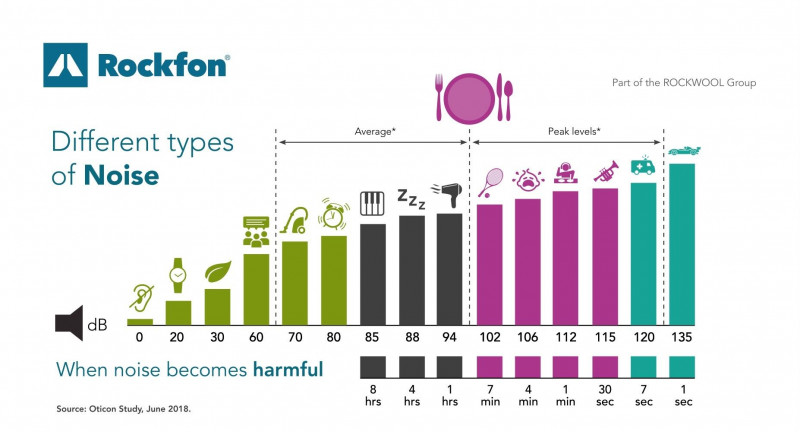-
Singapore
Copyright © 2025 Powered by BCI Media Group Pty Ltd
Confirm Submission
Are you sure want to adding all Products to your Library?
Contact Detail

Noise pollution and its impacts
What is noise pollution? The definition of noise pollution is the spreading of noise that negatively impact our lives and it is one of the main problems facing modern societies today. Long-term exposure to excessive noise has significant negative health impacts and it continues to grow. Unfortunately, The European Environment Agency (EEA) estimates that exposure to noise pollution causes 12,000 premature deaths and contributes to 48,000 new cases of ischemic heart disease per year across Europe. It is also estimated that 22 million people suffer from chronic annoyance and 6.5 million people suffer from chronic sleep disturbance.
Europe is not alone in this. The Centre for Disease Control and Prevention in the United States says that noise-induced hearing loss is the third most widespread chronic health condition – more common than diabetes or cancer.
Inside noise pollution
Our exposure to noise pollution isn’t only something that we experience when we’re outside, it’s also something that we equally contend with, if not more, when we’re indoors.
The definition of noise is “an audible acoustic energy that adversely affects the physiological or psychological wellbeing of people”. Back in the 90’s there was an interesting phenomenon known as Sick Building Syndrome, where people were falling ill because of the indoor environment. This prompted the World Health Organisation to create a declaration around the importance of wellbeing inside buildings.
One major driver in how we experience our built environment is our exposure to unhealthy levels of noise. This can be related to exposure to noise levels at work, bothersome noise in shopping malls, boutiques and even noise disturbance in restaurants. As high as 90% of people surveyed by Speak Easy: Hearing the views of your customers, said that background noise was the biggest problem they faced when eating at a restaurant.
Have a look at the graph below and see different sound levels and how long exposure to these noises take before they become harmful.

We’re not the only ones affected by noise
Noise pollution affects both humans and animals alike. To give an example, birds in cities, especially those near airports and highways, must sing at a higher amplitude and higher frequencies to alleviate interference from noise pollution. This is also found underwater as well. Noise from boat engines has shown to disturb spawning, push schools of fish to deeper waters or even delay migratory journeys.
Noise pollution is everywhere - and even in the quietest place on Earth you will hear a lot of noise.
The quietest place on Earth
To stop noise pollution and find real silence, we have to travel to the Microsoft Headquarters in Redmond Washington, USA. Here we find, according to the Guinness Book of World Records, the quietest place on the planet.
The anechoic chamber, which means that it is devoid of sound and electromagnetic waves, was designed using giant mineral wool foam wedge to completely absorb noise and to stop soundwaves as high as 120 dB(A) from entering the chamber.
Built for Microsoft to test the sensitivity of audio devices, it cost them 1,5 million dollars to build the 40m2 room. Inside the chamber the level of sound is -20.35 dB(A), which approaches the absolute “zero” level of sound.
But how would it feel to be in a room like this? The anechoic chamber would create a deafening silence, so much so, that very faint sounds would become audible. You would begin to hear your own heartbeat, your breathing and even the blood coursing through your veins. This can become very disturbing. In fact, it can be so disorienting that people that have spent extended amounts of time in the chamber become dizzy and nauseous. The longest time anyone has endured this extreme quiet was for 45 minutes.
Getting the right level of sound isn’t just about removing noise altogether, it’s about noise control and getting the right balance.
Noise pollution is getting attention
The influence of noise is something that governments are waking up to. We are seeing politicians and agencies lobbying for standards when it comes to indoor noise pollution as well as outdoor noise pollution. For example, in France, Spain, Germany, United Kingdom, Poland, and the Scandinavian countries, we see that there are specific acoustic regulations in hospitals to create an environment that offers stillness and better supports recovery. This trend can also be found in schools and other indoor spaces.
The European Environmental Agency has also begun to collect information about noise pollution levels around different European countries. The findings show that Estonia has the lowest levels of noise pollution, with the total population being exposed to the equivalent of 55 dB(A) during the day. Following Estonia is Lithuania and the Netherlands.
Make your world sound better
While it’s not possible to remove all levels of noise pollution that we experience, we can make a difference in many areas of our lives. The use of acoustic solutions for indoor spaces is a great way to regulate reverberation and reduce many of the negative side-effects commonly associated with exposure to noise pollution.
By managing noise problems, we can have safer noise levels at work, improve learning in schools, recovery in hospitals and reduce other side-effects of unwanted sound.
For more products information, please login to (https://www.rockfon.asia/)
Author: Pascal Van Dort’s



